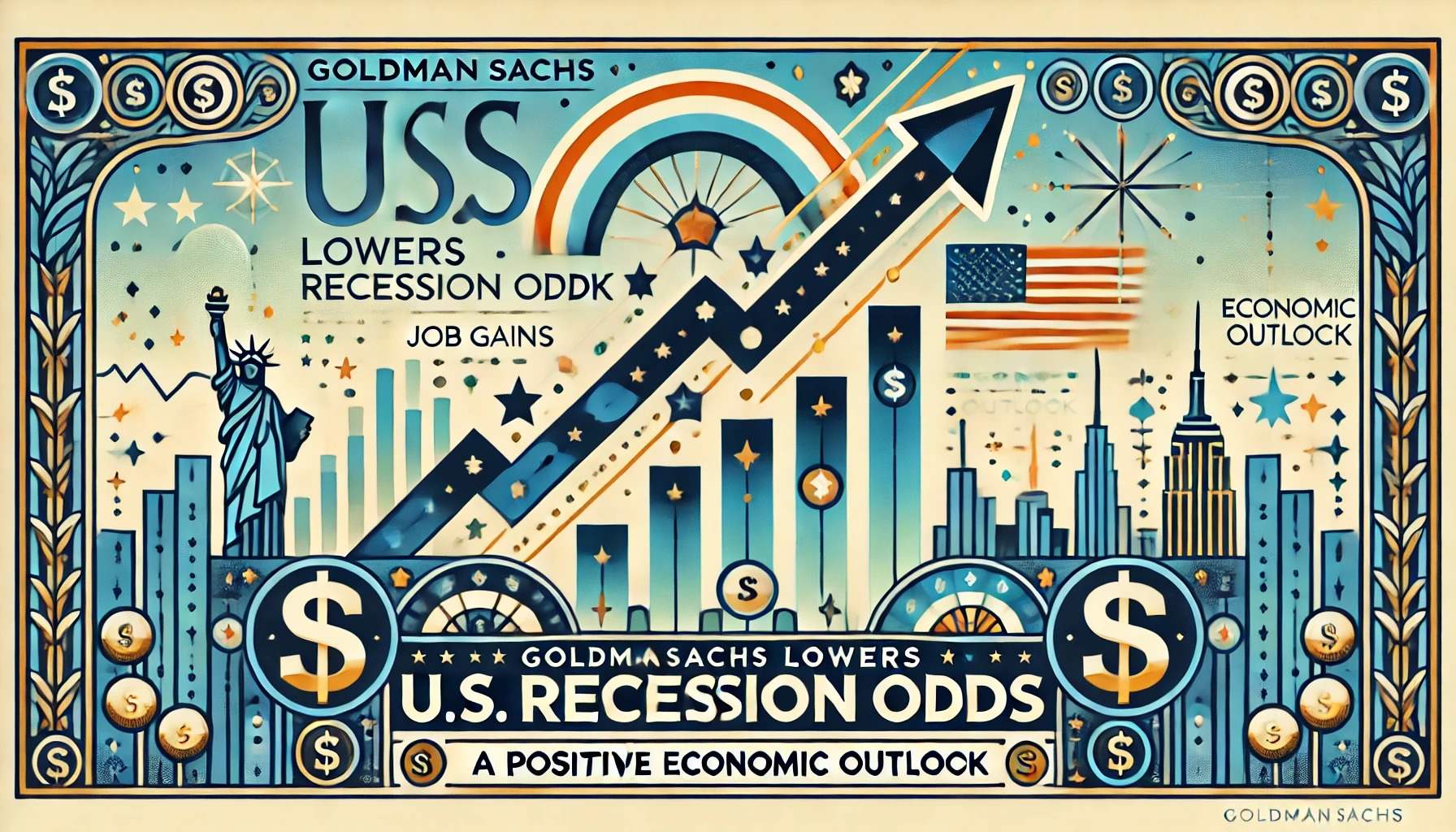U.S. Recession Risk Decreases Amid Job Market Gains
Goldman Sachs has reduced the probability of a U.S. recession within the next 12 months to 15%, down from 20%, after the September employment data showed robust growth. The Labor Department reported the highest job gains in six months, with unemployment falling to 3.8%.
Labor Market Narrative Shift
Goldman Sachs’ Chief U.S. Economist, Jan Hatzius, noted that the September employment report has "reset the labor market narrative," easing concerns about a rapid weakening in labor demand. The strong job gains suggest the unemployment rate is not expected to rise significantly.
Federal Reserve Rate Outlook and Market Reactions
Goldman Sachs forecasts consecutive 25 basis point cuts by the Federal Reserve, targeting a terminal rate of 3.25-3.5% by June 2025. Hatzius also indicated a reduced risk of a more aggressive 50-basis-point cut. Financial markets have increased the probability of a quarter-point rate cut in November, jumping to 71.5% following the jobs report, as per the CME Group's FedWatch tool.
Job Growth Outlook and Economic Trends
Despite some volatility in job numbers, Goldman Sachs sees no clear signs of persistent negative revisions, crediting steady job growth to strong GDP and high job openings. However, the firm cautions that October's data may be influenced by external factors, such as potential hurricanes and significant strikes, which could affect payroll figures.
Conclusion
With the economy showing resilience through strong job growth and GDP expansion, Goldman Sachs maintains an optimistic outlook on the U.S. economy, while remaining alert to possible short-term disruptions.



 Gold and Silver Surge as Safe Haven Demand Rises on U.S. Economic Uncertainty
Gold and Silver Surge as Safe Haven Demand Rises on U.S. Economic Uncertainty  Chinese Robotaxi Stocks Rally as Tesla Boosts Autonomous Driving Optimism
Chinese Robotaxi Stocks Rally as Tesla Boosts Autonomous Driving Optimism  Wall Street Futures Slip as Tech Stocks Struggle Ahead of Key US Economic Data
Wall Street Futures Slip as Tech Stocks Struggle Ahead of Key US Economic Data  Asian Currencies Trade Sideways as Dollar Weakens Ahead of Key U.S. Data
Asian Currencies Trade Sideways as Dollar Weakens Ahead of Key U.S. Data  Bank of Korea Downplays Liquidity’s Role in Weak Won and Housing Price Surge
Bank of Korea Downplays Liquidity’s Role in Weak Won and Housing Price Surge  Singapore Growth Outlook Brightens for 2025 as Economists Flag AI and Geopolitical Risks
Singapore Growth Outlook Brightens for 2025 as Economists Flag AI and Geopolitical Risks  Oil Prices Slip in Asia as 2026 Supply Glut Fears and Russia-Ukraine Talks Weigh on Markets
Oil Prices Slip in Asia as 2026 Supply Glut Fears and Russia-Ukraine Talks Weigh on Markets  Oil Prices Rebound as Trump Orders Blockade of Sanctioned Venezuelan Tankers
Oil Prices Rebound as Trump Orders Blockade of Sanctioned Venezuelan Tankers  New Zealand Budget Outlook Shows Prolonged Deficits Despite Economic Recovery Hopes
New Zealand Budget Outlook Shows Prolonged Deficits Despite Economic Recovery Hopes  China’s November Economic Data Signals Slowing Industrial Output and Weak Consumer Demand
China’s November Economic Data Signals Slowing Industrial Output and Weak Consumer Demand  Japan Exports to U.S. Rebound in November as Tariff Impact Eases, Boosting BOJ Rate Hike Expectations
Japan Exports to U.S. Rebound in November as Tariff Impact Eases, Boosting BOJ Rate Hike Expectations  Asian Technology and Chipmaking Stocks Slide as AI Spending Concerns Shake Markets
Asian Technology and Chipmaking Stocks Slide as AI Spending Concerns Shake Markets  Australian Consumer Sentiment Slumps in Early December as Inflation Fears Resurface
Australian Consumer Sentiment Slumps in Early December as Inflation Fears Resurface  Dollar Struggles as Markets Eye Key Central Bank Decisions and Global Rate Outlooks
Dollar Struggles as Markets Eye Key Central Bank Decisions and Global Rate Outlooks  Asian Fund Managers Turn More Optimistic on Growth but Curb Equity Return Expectations: BofA Survey
Asian Fund Managers Turn More Optimistic on Growth but Curb Equity Return Expectations: BofA Survey  Gold and Silver Prices Dip as Markets Await Key U.S. Economic Data
Gold and Silver Prices Dip as Markets Await Key U.S. Economic Data 































